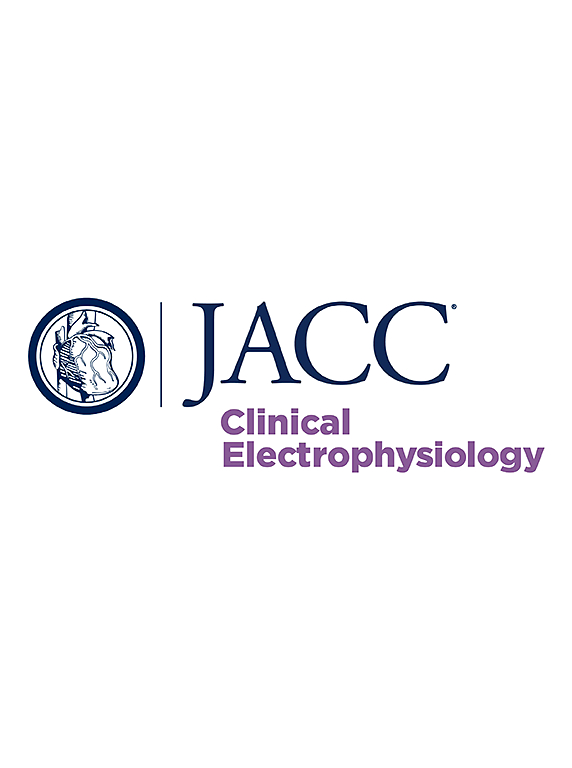Predictors of Clinical Success of Cardioneuroablation in Patients With Syncope
IF 8
1区 医学
Q1 CARDIAC & CARDIOVASCULAR SYSTEMS
引用次数: 0
Abstract
Background
Cardioneuroablation (CNA) is a promising treatment for syncope.
Objectives
This study sought to analyze the success and risk of CNA, and to describe predictive factors of CNA success in patients with syncope.
Methods
Seventy-seven consecutive patients with syncope treated with CNA in 22 hospitals and at least 6 months of follow-up were included. Patients with reflex cardioinhibitory, mixed syncope, functional sinus node dysfunction (SND), or functional atrioventricular block were included. The primary endpoint was the recurrence of syncope after the CNA.
Results
Mean age was 49.3 ± 13.4 years and 54.5% were women. Five (6.5%) patients presented complications. Three patients presented SND, 1 required a pacemaker. During a median follow-up of 12 months (Q1-Q3: 8-20 months), 26 (33.8%) patients had recurrence of syncope. Women had a significantly higher risk of recurrence compared with men (HR: 3.3; 95% CI: 1.2-8.8; P = 0.016). Patients >50 years of age had a significantly lower risk of recurrence compared with younger patients (HR: 0.3; 95% CI: 0.1-0.9; P = 0.032). The risk of recurrence in mixed syncope was significantly higher than in cardioinhibitory syncope (HR: 4.4; 95% CI: 1.1-17.5; P = 0.033). Syncope recurrence was significantly less frequent in patients treated with general anesthesia or deep sedation compared with conscious sedation (HR: 0.2; 95% CI: 0.1-0.6; P = 0.002). Finally, the number of radiofrequency applications (≤30 or >30) had a significant association with CNA success (HR: 0.4; 95% CI: 0.2-0.9; P = 0.042). These results were adjusted for confounding factors.
Conclusions
In this multicenter study, the effectiveness of CNA was less than previously reported. We found a 3.9% risk of SND. Male sex, age >50 years, cardioinhibitory syncope, general anesthesia or deep sedation, and >30 radiofrequency applications could predict success of CNA for syncope.
晕厥患者心脏神经消融术临床成功的预测因素:一项多中心研究的结果
背景:目的:本研究旨在分析CNA的成功率和风险,并描述晕厥患者CNA成功率的预测因素:本研究旨在分析 CNA 的成功率和风险,并描述晕厥患者 CNA 成功率的预测因素:方法:纳入了在22家医院接受CNA治疗且随访至少6个月的77名晕厥患者。其中包括反射性心抑制性晕厥、混合性晕厥、功能性窦房结功能障碍(SND)或功能性房室传导阻滞患者。主要终点是 CNA 后晕厥的复发率:平均年龄为 49.3 ± 13.4 岁,54.5% 为女性。5名患者(6.5%)出现并发症。三名患者出现 SND,一名患者需要安装起搏器。在中位随访 12 个月(Q1-Q3:8-20 个月)期间,26 名(33.8%)患者再次出现晕厥。女性的复发风险明显高于男性(HR:3.3;95% CI:1.2-8.8;P = 0.016)。与年轻患者相比,50 岁以上患者的复发风险明显较低(HR:0.3;95% CI:0.1-0.9;P = 0.032)。混合性晕厥的复发风险明显高于心抑制性晕厥(HR:4.4;95% CI:1.1-17.5;P = 0.033)。与有意识镇静相比,使用全身麻醉或深度镇静治疗的患者晕厥复发率明显较低(HR:0.2;95% CI:0.1-0.6;P = 0.002)。最后,射频应用次数(≤30 或 >30)与 CNA 成功率有显著关系(HR:0.4;95% CI:0.2-0.9;P = 0.042)。这些结果已对混杂因素进行了调整:在这项多中心研究中,CNA的有效性低于之前的报道。我们发现 SND 的风险为 3.9%。男性性别、年龄大于 50 岁、心抑制性晕厥、全身麻醉或深度镇静以及大于 30 次射频应用可预测 CNA 治疗晕厥的成功率。
本文章由计算机程序翻译,如有差异,请以英文原文为准。
求助全文
约1分钟内获得全文
求助全文
来源期刊

JACC. Clinical electrophysiology
CARDIAC & CARDIOVASCULAR SYSTEMS-
CiteScore
10.30
自引率
5.70%
发文量
250
期刊介绍:
JACC: Clinical Electrophysiology is one of a family of specialist journals launched by the renowned Journal of the American College of Cardiology (JACC). It encompasses all aspects of the epidemiology, pathogenesis, diagnosis and treatment of cardiac arrhythmias. Submissions of original research and state-of-the-art reviews from cardiology, cardiovascular surgery, neurology, outcomes research, and related fields are encouraged. Experimental and preclinical work that directly relates to diagnostic or therapeutic interventions are also encouraged. In general, case reports will not be considered for publication.
 求助内容:
求助内容: 应助结果提醒方式:
应助结果提醒方式:


